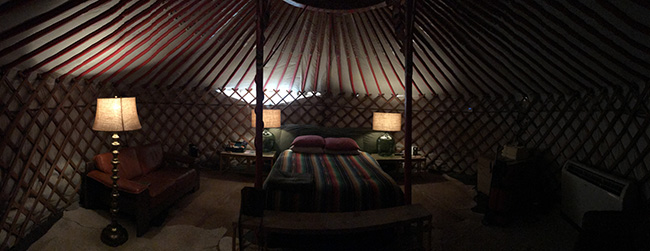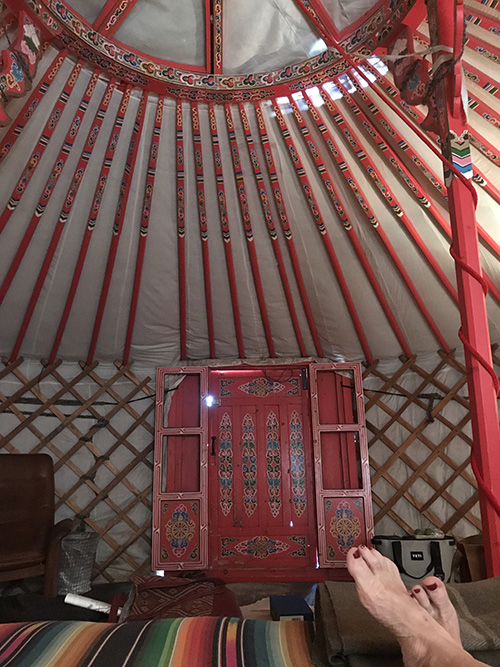Making it to Marfa: The End of an Architectural Road Trip
This summer we’ve been following Rolf on his architectural road trip from Vermont, through America’s heartland, to his destination in Texas. As summer winds down, we share the final stop on this journey, a visit to the artistic and serene town of Marfa, Texas.
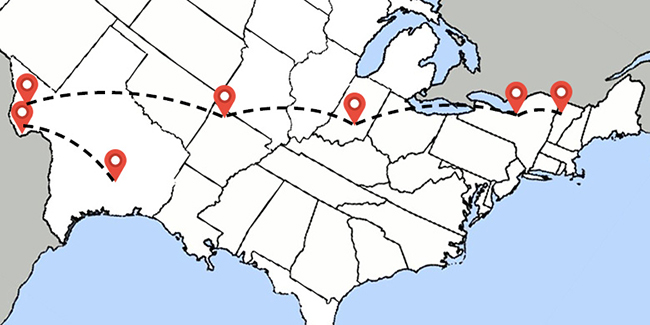
From Tulsa, Oklahoma, we coursed south across flat lands covered in auburn crop fields with the tree cover slowly disappearing. The red soil slipped into the horizon against the clear blue skies. Flat, but still, a very dramatic landscape, with little in the way of vertical rise. We crossed into north Texas near Wichita Falls and soon found ourselves amidst hundreds of wind turbines. Oklahoma and Texas have exceptional wind generation numbers and we continued to see these vast wind farms throughout our trip.
As the heat mounted, we began to feel the exhausted nature of the landscape. Yes, more windmills but by Abilene, and west to Midland and Odessa, we observed a land ravaged and abused by man. The oil wells began to outnumber the wind turbines and the number of abandoned buildings seemed to vastly exceed those still in use. And those still in use were hastily erected, convenient metal buildings, clearly serving some recently needed and temporary purpose. Everything looked to be temporary … except the abuse of the land. No piece of soil was untouched or upended. Everywhere it was violation and expediency. An earthly armageddon of a sort populated, it seemed, by those who thought little about the world we live on. We could not wait to move on to parts further south … to the artistic calm of Marfa.
Formerly a railroad depot, Marfa has been invaded by artist types following the lead of American sculptor Donald Judd, who relocated from New York City in the early 70’s . The town is rather fashionable. Gray, white and black predominate. Judd’s son and the Chinati Foundation continue to celebrate the work and life of Judd, and a full complement of other celebrated artists populate the town and its fashionable cultural, food and drink establishments. Restored old trucks and cars mosey about the gridded streets and trendy coffee shops adorn the town. It is quite a place with a setting that is about as far away from anywhere as one could get. You are here with yourself and plenty of other like-minded characters.
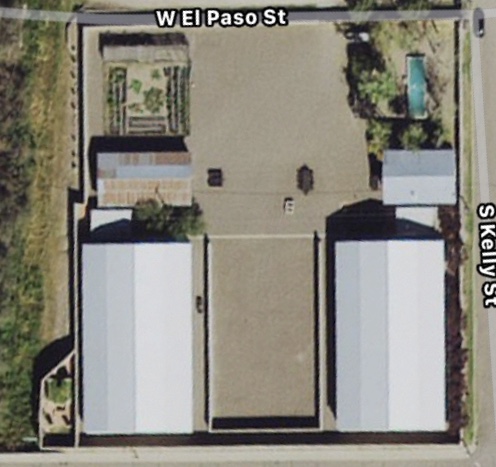
Marfa is worth a visit for multiple reasons. One is the Judd compound set in the middle of town and encompassing his former residence as well as two large warehouses that served as his work spaces. These structures are all within a walled compound which includes a raised pool (not unlike a water trough for cattle), a vegetable garden and a linear chicken and pig enclosure. It’s a precisely gridded site that is now toured by the public.
Our guide was an enthused and knowledgeable man who’d come to Marfa as a restauranteur. He espoused a wealth of information and clearly admired Judd, his works, and his way of working. The warehouses now contain displayed Judd works, an extensive library and numerous “bed stations” so that Judd could sleep were he worked. It was all reassuring to me. Judd surrounded himself with all aspects of his work and everyday life. The two were wonderfully intertwined so that one could not distinguish where work ends and the rest of life begins. That’s always been my mode. There is terrific joy in life and work and making the two course naturally together is ultimately satisfying … maybe I too was a junior Judd of sorts … One can dream!
Beyond Judd’s work and home compound are two very special constructs. The larger of the two consists of a kilometer-long assemblage of precisely made concrete forms that rest outside on what appeared to be a former grazing meadow.
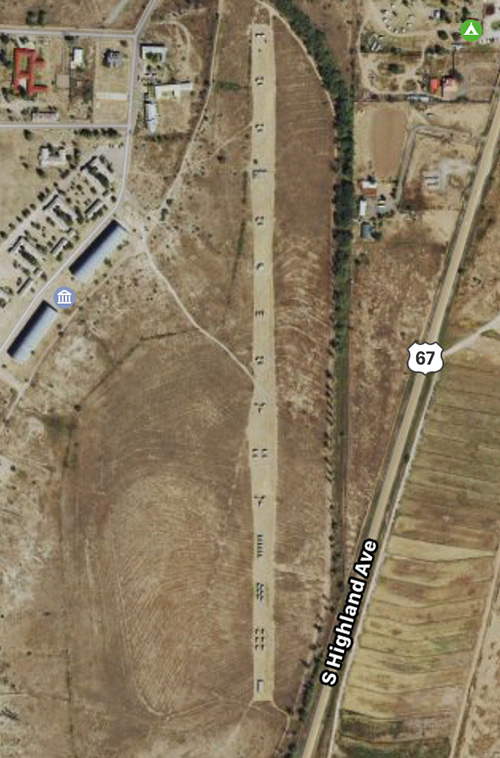
The forms have common dimensions but vary according to “missing” sides and ends and the way in which the pieces interact with one another. The dimensions are close to 8x8x16 feet and the progression is not unlike the stations of the cross as common forms group together along a perfect north-south axis. It is a monumental and relentless work, easily holding its own with the likes of Stonehenge and the Urubamba Valley. On a sheer emotional level, I likened the feel of the place to the beauty of observing stands of grass in a large meadow or a forested stretch of trees solemnly standing together. While beautiful as individuals, it is the whole of the forest or the grassy meadow that makes beauty apparent. Judd’s assemblage of concrete is much the same: the light is the agent of illumination and articulation. Astounding.
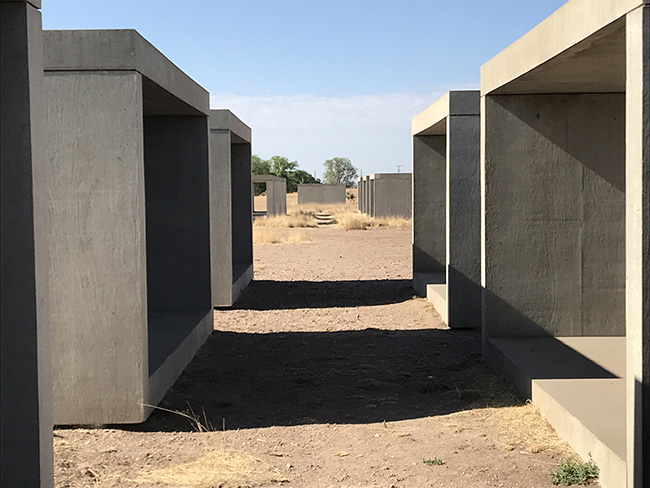
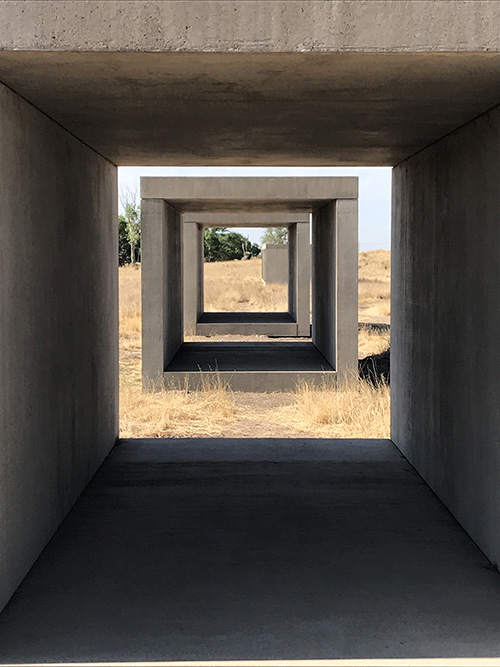
The second of the constructs is placed indoors. These, by contrast, are polished aluminum boxes … smaller, 4’x4’x8’ or so, arranged individually in rows inside two former military storage structures. Those structures are linear with glass sidewalls and a semicircular roof form. We architects like to think that we can create space that extends out into the exterior, but Judd is several up on us. The light, the aluminum and the glass sidewalls completely blur any sense of edge and the appearance is one of complete motion. The boxes appear to be cavorting with the sky and grasses just outside. The aluminum is half-inch material, exactingly made. Again, a large-scale assemblage, over one hundred “boxes” in all, like leaves shimmering in the sun.
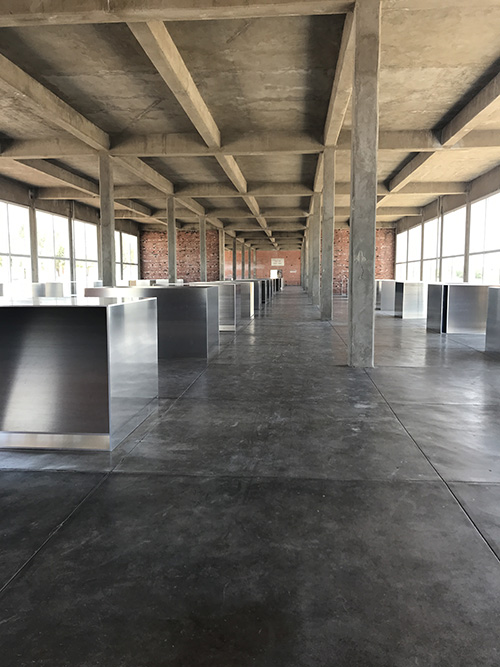
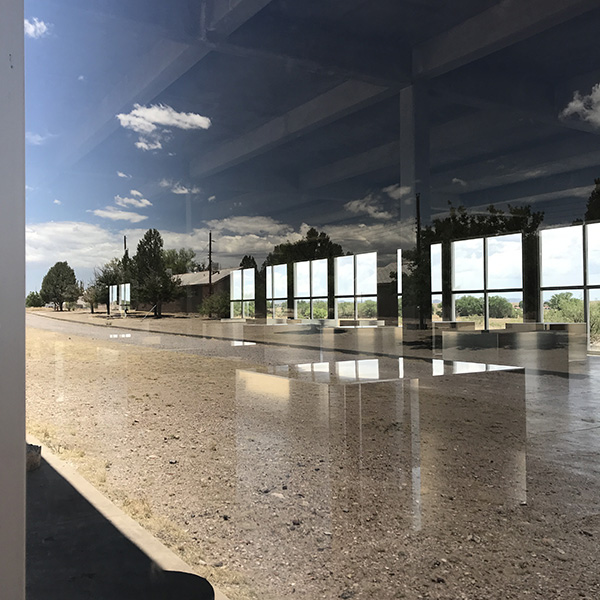
We lived the art life in Marfa and stayed at El Cosmico, a “hotel/motel” comprised of airstream trailers, tents and yurts. We felt adrift in the desert amongst wanna-be hippies, Stevie and I brought back to our early Vermont days. From here we were grooving and moving on to Austin, our final stop on this long, wonderful trip.
